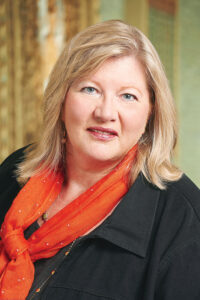
Random Notes
We all have some moments of great pride in our communities of residence and other times where we worry about the future viability of the city or town we call our home. We justifiably celebrate the beauty of the landscapes, the benefits of the weather, the quality of the air, the friendliness of the inhabitants, and the economic prospects for residents. We also spend a lot of time expressing our concerns about the elements of the community that are not working as well. We are concerned about the state of the infrastructure, particularly road quality and potholes. We worry about speed of access to good health care, we worry about the education system, and we worry about crimes in our communities.
Wouldn’t it be nice if there were a “no-fail” recipe for creating a perfect community, just as there are recipes for no-fail chocolate cakes or perfect potato salads? If we knew that we could create a perfect community by blending the ingredients in certain proportions and then mixing them together and baking them in a certain way, we would all be able to live in the communities of our dreams with adequate resources to provide for all the services and amenities that make our lives comfortable, healthy, safe, and enjoyable. If only it were so easy!
Manitoba is blessed in so many ways, and yet we have always had our share of challenges as well. Our province is beautiful, and it is entirely possible to live a very good life here, but it is also very possible to become discouraged by the challenges and perceived shortage of resources we feel we must address issues we face as a community. We know that we need basic infrastructure for community life, water and sewage systems, road and transportation systems, schools, hospitals, businesses and industries, services and merchants, legal systems, security systems, social support systems, parks and recreational facilities, entertainment options, and cultural amenities.
It would be great if there were that recipe for success that community leaders could receive that would give the perfect proportions for investment in each of these categories for a perfect community life. Alas, that option is not there, and in recent years, I have begun to believe that we are approaching the balance for these items in ways that quickly become exponentially more costly without ever having a hope of adequate resources to solve the problems with enough left over for the things that add so much value to our lives. If crime is a very large issue, our initial response is to add more police services and prisons, but we cannot possibly manage to put a police officer on every corner, in every school, and on every bus. If slow access to health care is a problem, we cannot possibly hire enough doctors and build enough hospitals to adequately deal with the health issues of a society that is not healthy. Perhaps we need to spend much more time thinking about how we can make our communities better by investing radically in the underlying issues that are causing our communities to experience such severe shortages in the costliest services to provide.
Are we brave enough to think radically about the health and safety of our community members and what that might mean for all of us? Maybe we would find that radically readjusting where we make community investments could provide the most incredible benefits for all of us. I know that thinking about how we can help most people have the most healthy and productive lives might mean thinking about our total community investment in completely different ways, but I have become increasingly convinced that the ways we are approaching many aspects of community life at this time are simply not sustainable.
I remain inspired by a quote about societal change that I heard several years ago: If you are looking for social change, first you must address the items that give people hope and joy.
Click here to know the secret of Trudy's No-Fail Chocolate Cake.


